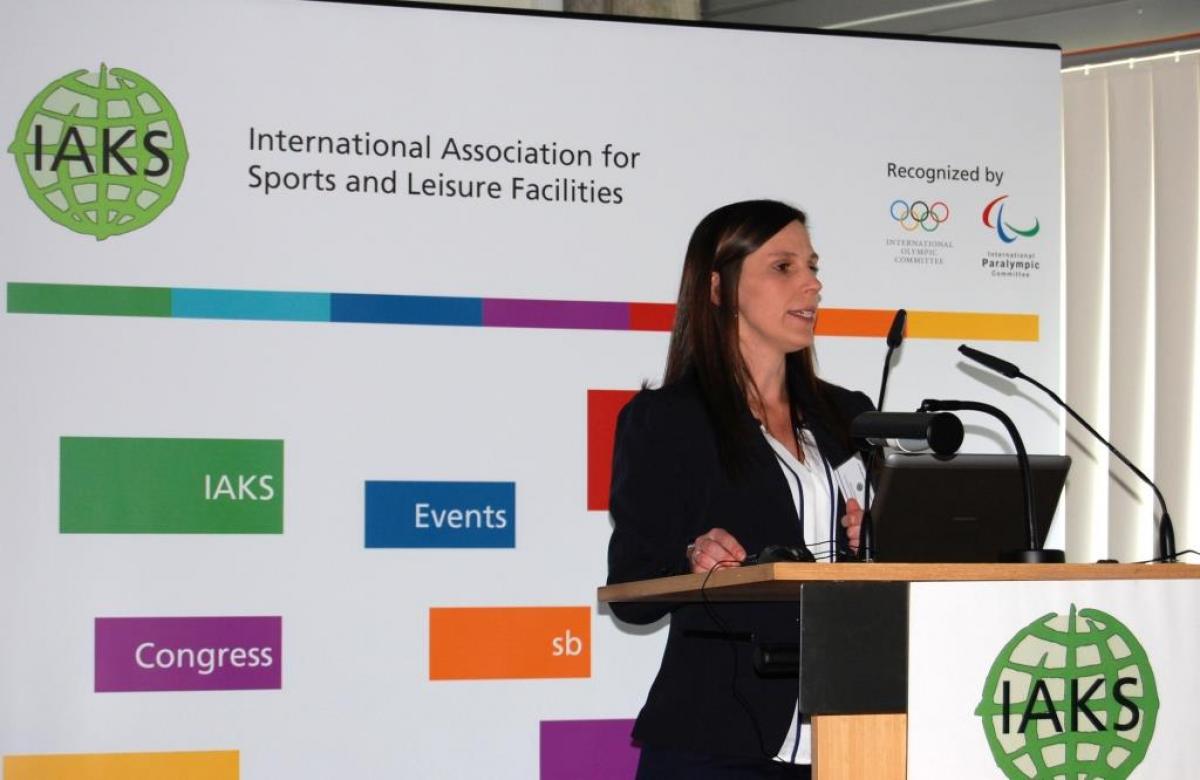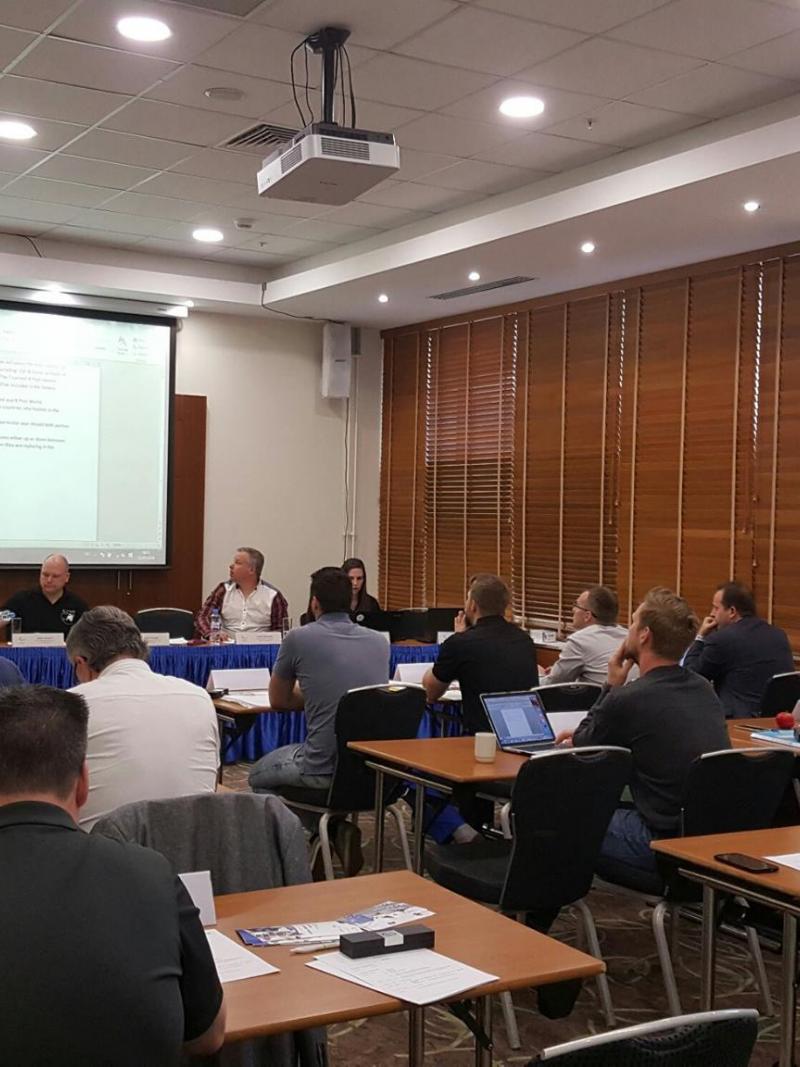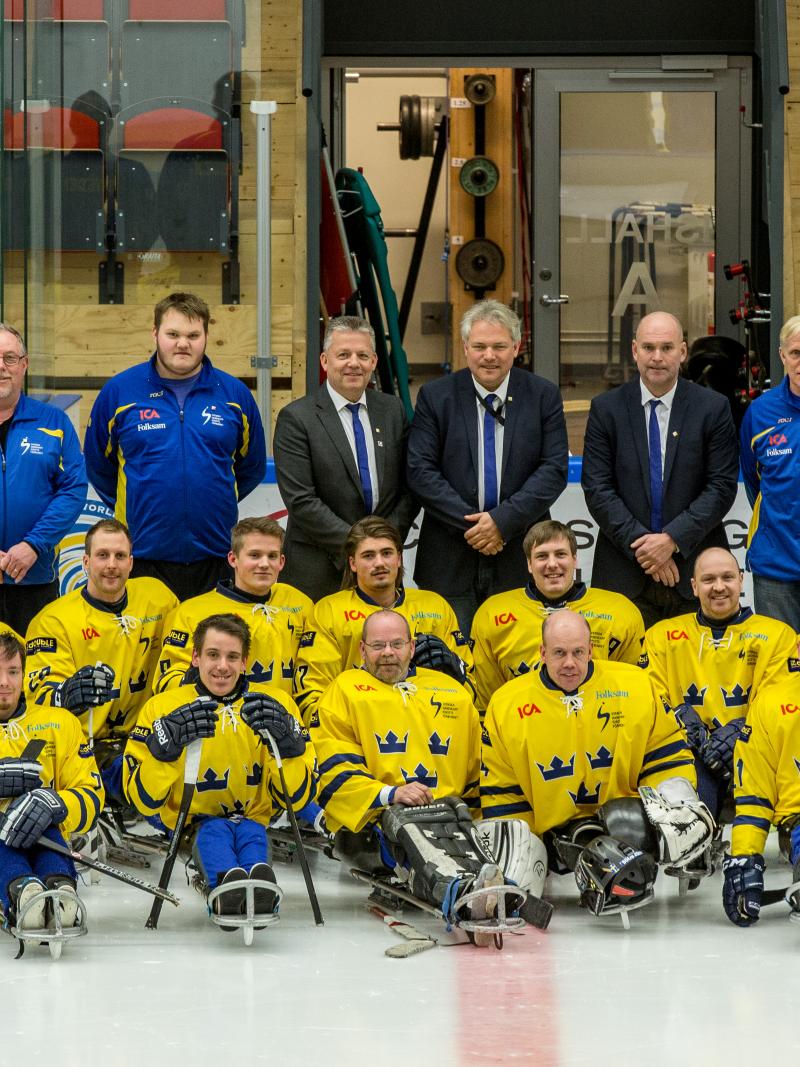IAKS hears about barrier free ice hockey venues
Jessica Korber gave a presentation to the 16th IAKS Management Conference on Artificial Ice Rinks about creating ice hockey venues that are accessible for all. 02 Jun 2016
Jessica Korber gave a presentation to the 16th IAKS Management Conference on Artificial Ice Rinks.
“Ice sledge hockey is a game that can be enjoyed by everyone and I think we have shown that with the growth in interest the sport has enjoyed in recent years.”
IPC Ice Sledge Hockey has given a presentation at the 16th International Association for Sports and Leisure Facilities (IAKS) Management Conference on Artificial Ice Rinks on creating accessible ice hockey venues.
Jessica Korber, IPC Ice Sledge Hockey Sport Manager, attended the conference to raise awareness about the sport and highlight areas which are important to bring venues up to the standards required to host international competitions.
Over 130 people from nine countries were in attendance and the invitation to speak was the result of the close relationship between the International Paralympic Committee and IAKS.
The sport has developed a series of requirements for venues which host Championships and Paralympic Winter Games, including the design of dasherboards, players’ benches and penalty boxes, requirements for locker rooms and general accessibility. This is based on the needs of everyone who might use the ice or want to watch live.
Korber gave an overview of measurements needed for each area of the game and other requirements, such as barrier free entry to the penalty and team areas from the ice, a clear view for players in sledges from the penalty benches and penalty boxes and the width of the entry gate. At many venues there is stepped entry from the ice, which means players cannot easily transition, impacting on the flow of the game.
Locker rooms should be close to the ice and where possible the access should be covered with synthetic ice to allow players to skate between the two. Toilets and changing rooms should also be accessible.
More generally, venues should cater for the needs of spectators, media and the local community. National legislation on accessibility exists in many countries and new venues can easily be built with a barrier free environment at the forefront of the design process.
The example of the Ostersund Arena was used to show how this can be achieved. The arena in Sweden has been used for several major ice sledge hockey Championships in recent years and was constructed according to the latest international standards.
Korber said: “I was delighted to be asked to present by the IAKS on this important subject, not just to ensure accessibility for ice sledge hockey players, but also to highlight the need for easy access for everyone from wheelchair users to parents with pushchairs.
“It was also a good way to promote awareness of the sport, contributing to its growth, and we received a really positive reception from those in attendance.
“Ice sledge hockey is a game that can be enjoyed by everyone and I think we have shown that with the growth in interest the sport has enjoyed in recent years. If venues that host international competitions can meet the standards, this will also have a positive legacy effect on the number and diversity of spectators they can attract and also make it easier for people to try the sport for themselves.”
More information about the 16th IAKS Management Conference on Artificial Ice Rinks is available from the IAKS website.

 Facebook
Facebook
 Instagram
Instagram
 Twitter
Twitter
 Youtube
Youtube


